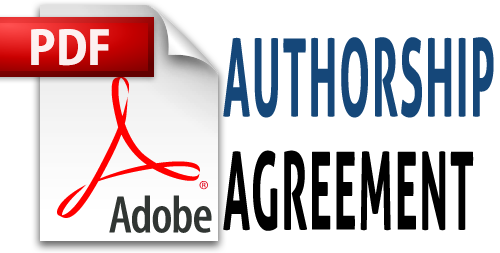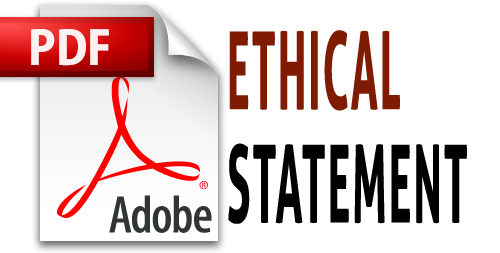EFEKTIVITAS PEMBELAJARAN GEOMETRI MOLEKUL MENGGUNAKAN MOBILE VIRTUAL REALITY (MVR) UNTUK MENINGKATKAN KEMAMPUAN VISUOSPASIAL
 Ainun Nisa(1),
Kusumawati Dwiningsih(2*)
Ainun Nisa(1),
Kusumawati Dwiningsih(2*)
(1) Universitas Negeri Surabaya
(2) Universitas Negeri Surabaya
(*) Corresponding Author
 Abstract viewed : 3717
|
Abstract viewed : 3717
|  PDF downloaded : 588
PDF downloaded : 588
Abstract
Chemistry is a branch of science that encourages various advances in various fields. However, the characteristics of chemistry which have complex concepts make it difficult for class X high school students to understand chemistry. Thus, the problem that is the focus of discussion in this study is how to overcome the low visuospatial skills of high school students in class X, so that students can understand complex concepts in chemistry. This study uses the research design and development of the 4D Thiaganrajan modified 3D Ibrahim method. This study aims to determine the effectiveness of Mobile Virtual Reality (MVR)-based molecular geometry learning media in improving visuospatial skills. The effectiveness of the MVR-based molecular geometry learning media is stated based on the interpretation of the N-Gain score. The results showed an increase in the percentage of correct answers on the posttest by 32.15% with a significance level ranging from 0.57-1 in the medium to high category. In this regard, the use of MVR-based molecular geometry learning media is said to be effective because it can improve students' visuospatial skills. That is, MVR-based molecular geometry learning media can help students to comprehensively represent molecular geometry sub-materials.
Abstrak
Kimia merupakan salah satu cabang ilmu pengetahuan yang mendorong berbagai kemajuan di berbagai bidang. Namun, karakteristik ilmu kimia yang memiliki konsep kompleks membuat peserta didik SMA kelas X sulit memahami ilmu kimia. Dengan demikian, masalah yang menjadi fokus pembahasan di dalam penelitian ini adalah Bagaimana cara mengatasi visuospasial skills peserta didik SMA kelas X yang tergolong rendah, agar peserta didik mampu memahami konsep kompleks dalam ilmu kimia. Penelitian ini menggunakan desain penelitian dan pengembangan metode 4D Thiaganrajan modifikasi 3D Ibrahim. Penelitian ini bertujuan untuk mengetahui efektivias media pembelajaran geometri molekul berbasis Mobile Virtual Reality (MVR) dalam meningkatkan visuospasial skills. Efektivitas media pembelajaran geometri molekul berbasis MVR dinyatakan berdasarkan interpretasi skor N-Gain. Hasil penelitian menunjukkan peningkatan persentase jawaban benar pada postest sebesar 32,15% dengan tingkat signifikansi berkisar antara 0,57-1 pada kategori sedang sampai dengan tinggi. Dalam kaitan ini, pemanfaatan media pembelajaran geometri molekul berbasis MVR dikatakan efektif karena dapat meningkatkan visuospasial skills peserta didik. Artinya, media pembelajaran geometri molekul berbasis MVR dapat membantu peserta didik untuk merepresentasikan submateri geometri molekul secara komprehensif.
Keywords
References
Akker, J. Van Den, Bannan, B., Kelly, A. E., Niveen, N., & Polmp, T. (2013). Educational design research. In T. Plomp & N. Nieveen (Eds.), Educational Design Research (pp. 29–35). https://doi.org/10.1007/978-1-4614 -3185-5_11
Al-Balushi, S. M., Al-Musawi, A. S., Ambusaidi, A. K., & Al-Hajri, F. H. (2017). The Effectiveness of Interacting with Scientific Animations in Chemistry Using Mobile Devices on Grade 12 Students’ Spatial Ability and Scientific Reasoning Skills. Journal of Science Education and Technology, 26(1), 70–81. https://d oi.org/10.1007/s10956-016-9652-2
Antonoglou, L. D., Kostelidou, T. N., Charistos, N. D., & Sigalas, M. P. (2014). Investigating Chemistry Students’ Skills to Mentally Manipulate (Rotation & Reflec tion) 2D Symbolic Molecular Representations. Procedia - Social and Behavioral Sciences, 152, 517–522. https://doi.org/10.1016/j.sbsp ro.2014.09.208
Berg, A., Orraryd, D., Pettersson, A. J., & Hultén, M. (2019). Representa tional challenges in animated chemistry: self-generated animati ons as a means to encourage students’ reflections on sub-micro processes in laboratory exercises. Chemistry Education Research and Practice, 20(4), 710–737. https://doi.org/10.1039/c8rp0 0288f
Bernholt, S., Broman, K., Siebert, S., & Parchmann, I. (2019). Digitising Teaching and Learning – Additional Perspect
ives for Chemistry Education. Israel Journal of Chemistry, 59(6), 554–564. https://doi.org/10.1002/ijch.2 01800090Coutrot, A., Schmidt, S., Coutrot, L., Pittman, J., Hong, L., Wiener, J. M., Hölscher, C., Dalton, R. C., Hornberger, M., & Spiers, H. J. (2018). Virtual navigation tested on a mobile app is predictive of real-world wayfinding navigati on performance. BioRxiv, 1–16. https://doi.org/10.11 01/305433
De Cock, M. (2012). Representation use and strategy choice in physics problem solving. Physical Review Special Topics - Physics Education Research, 8(2), 1–15. https://doi.org/10.1103/PhysRevSTPER.8.020117
Debarba, H. G., Montagud, M., Chagué, S., Lajara, J., Lacosta, I., Langa, S. F., & Charbonnier, C. (2020). Content format and quality of experience in virtual reality. In arXiv. https://arxiv.org/ abs/2008.04511
Dwiningsih, K., Sukarmin, Nf., Muchlis, Nf., & Rahma, P. T. (2018). Pengembangan Media Pembelajaran Kimia Mengguna kan Media Laboratorium Virtual Berdasarkan Paradigma Pembela jaran Di Era Global. Kwangsan: Jurnal Teknologi Pendidikan, 6(2), 156–176. https://doi.org/10.31800/ jtp.kw.v6n2.p156--176
Dwiningsih, K., Sukarmin, S., Muchli s, M., & Kartika Maharani, D. (2018). Development of Virtual Laboratory Inorganic Chemistry of Main Elements Based on Blended Learning Using Pogil Strategy. 177–184. https://doi.org/10.2991/s nk-18.2018.42
Erlina, Cane, C., & Williams, D. P. (2018). Prediction! the VSEPR Game: Using Cards and Molecular Model Building to Actively Enhance Students’ Understanding of Molecular Geometry. Journal of Chemical Education, 95(6), 991–995. https://doi.org/10.1021/acs.jchemed.7b00687
Evidiasari, S., Subanji, S., & Irawati, S. (2019). Students’ Spatial Reasoning in Solving Geometri cal Transformation Problems. Indonesian Journal on Learning and Advanced Education (IJOLAE), 1(2), 38–51. https://doi.org/10.239 17/ijolae.v1i2.8703
Fung, F. M., Choo, W. Y., Ardisara, A., Zimmermann, C. D., Watts, S., Koscielniak, T., Blanc, E., Coumoul, X., & Dumke, R. (2019). Applying a Virtual Reality Platform in Environmental Chemistry Education to Conduct a Field Trip to an Overseas Site. Journal of Chemical Education, 96(2), 382–386. https://doi.org/10. 1021/acs.jchemed.8b00728
Harle, M., & Towns, M. (2011). A review of spatial ability literature, its connection to chemistry, and implications for instruction. In Journal of Chemical Education (Vol. 88, Issue 3, pp. 351–360). https://doi.org/10.1021/ ed900003n
Huang, H. M., & Liaw, S. S. (2018). An analysis of learners’ intentions toward virtual reality learning based on constructivist and technology acceptance approac hes. International Review of Research in Open and Distance Learning, 19(1), 91–115. https://doi .org/10.19173/irrodl.v19i1.2503
Ibrahim, M. (2014). Ibrahim: Model Pengembangan Perangkat Pembelaja ran. PSMS-PPS UNESA.
Keengwe, J. (2018). Handbook of Mindfulness in Education: Vol. Advances i (J. Keengwe (ed.)). IGI Global. https://doi.org/10.1007/97 8-1-4939-3506-2
Khine, M. S. (2016). Visual-spatial ability in STEM education: Transforming research into practice. Visual-Spatial Ability in STEM Education: Transforming Research into Practice, October, 1–263. https://doi.org/10.1007/978-3-319-44385-0
Koleżyński, A. (2011). The concepts of an atom and chemical bond in physics and chemistry: the role of approximations. Semina Scientiar um, 10(0), 31. https://doi.org/10.15 633/ss.1555
Li, Y., & Gao, W. (2018). MUVR: Supporting multi-user mobile virtual reality with resource constrained edge cloud. Proceedings - 2018 3rd ACM/IEEE Symposium on Edge Computing, SEC 2018, 1–16. https://doi.org/1 0.1109/SEC.2018.00008
Meyer, O. A., Omdahl, M. K., & Makransky, G. (2019). Investiga ting the effect of pre-training when learning through immers ive virtual reality and video: A media and methods experiment. Computers and Education, 140 (December 2018), 103603. https:// doi.org/10.1016/j.compedu.2019.103603
Mihindo, W. J., Wachanga, S. W., & Anditi, Z. O. (2017). Effects of Computer-Based Simulations Teaching Approach on Students’ Achievement in the Learning of Chemistry among Secondary School Students in Nakuru Sub County, Kenya. Journal of Education and Practice, 8(5), 65–75.
Nurviandy, I., Dwiningsih, K., Habibi, A. R., & Akbar, A. F. (2020). Validity of Interactive Multimedia with 3D Visualization to Practice the Spatial Visual Intelligence of Class X High School Students on Metallic Bonding Materials. 196–200. https://doi.org /10.2991/snk-19.2019.33
Okumuş, S., Özdilek, Z., & Arslan, A. (2020). The Effect of Cooperative Learning Methods and Individual Learning Method on Pre-Service Science Teachers’ Sub-Micro Level Conceptual Understanding at Equilibrium Chemistry. Educational Policy Analysis and Strategic Research, 15(3), 394–425. https://doi.org/10. 29329/epasr.2020.270.19
Paes, D., Arantes, E., Konstruksi, J. I.-O. dalam, & 2017, undefined. (n.d.). Lingkungan imersif untuk meningkatkan pemahaman model 3D arsitektural: Membandingkan persepsi spasial pengguna antara virtual yang imersif dan tradisional…. Elsevier. Retrieved May 18, 2021, from https://www.sciencedirect.c om/science/article/pii/S0926580517308361
Pendás, A. M., Casals-Sainz, J. L., & Francisco, E. (2019). On Electrostatics, Covalency, and Chemical Dashes: Physical Interactions versus Chemical
Bonds. Chemistry - A European Journal, 25(1), 309–314. https://doi.org/10.1002/chem.201804160Philip, T. M., & Azevedo, F. S. (2017). Everyday science learning and equity: Mapping the contested terrain. Science Education, 101(4), 526–532. https://doi.org/10.1002/s ce.21286
Reilly, D., Neumann, D. L., & Andrews, G. (2016). Gender differences in spatial ability: Implications for STEM education and approaches to reducing the gender gap for parents and educators. In Visual-spatial Ability in STEM Education: Transforming Research into Practice (pp. 195–224). Springer International Publishing. https://doi.org/10.100 7/978-3-319-44385-0_10
Ryoo, K., Bedell, K., & Swearingen, A. (2018). Promoting Linguistically Diverse Students’ Short-Term and Long-Term Understanding of Chemical Phenomena Using Visualizations. Journal of Science Education and Technology, 27(6), 508–522. https://doi.org/10.1007/s 10956-018-9739-z
Saker, M., & Frith, J. (2019). From hybrid space to dislocated space: Mobile virtual reality and a third stage of mobile media theory. New Media and Society, 21(1), 214–228. https://doi.org/10.1177/14614 44818792407
Samon, S., & Levy, S. T. (2020). Interactions between reasoning about complex systems and conceptual understanding in learning chemistry. Journal of Research in Science Teaching, 57(1), 58–86. https://doi.org/10.1002/tea. 21585
Santoso, S. (2019). Mahir Statistik Parametrik (pp. 89–98). PT Elex Media Komputindo.
Savaneviciene, A., Statnicke, G., & Vaitkevicius, S. (2019). Individual innovativeness of different generations in the context of the forthcoming society 5.0 in Lithuania. Engineering Economics, 30(2), 211–222. https://doi.org/10. 5755/j01.ee.30.2.22760
Setiani, Y., & Rafianti, D. I. (2018). Pengaruh Tingkat Kecerdasan Visual-Spasial terhadap Literasi Kuantitatif Mahasiswa Calon Guru Matematika. Pengaruh Tingkat Kecerdasan Visual-Spasial Terhadap Literasi Kuantitatif Mahasiswa Calon Guru Matemat ika, 9(1), 38–46. https://doi.org/10. 15294/kreano.v9i1.12258.g7946
Slapničar, M., Tompa, V., Glažar, S. A., & Devetak, I. (2018). Fourteen-year-old students’ misc onceptions regarding the sub-micro and symbolic levels of specific chemical concepts. Journal of Baltic Science Education, 17(4), 620–632. https://doi.org/10. 33225/jbse/18.17.620
Stieff, M., Werner, S., DeSutter, D., Franconeri, S., & Hegarty, M. (2020). Visual chunking as a strategy for spatial thinking in STEM. Cognitive Research: Principles and Implications, 5(1). https://doi.org/10.1186/s41235-02 0-00217-6
Sudibjo, N., Idawati, L., & Harsanti, H. R. (2019). Characteristics of Learning in the 5.0, of Industry 4.0 and Society. Advances in Social Science, Education and Humanities Research, 372(ICoET), 276–278.
Sugiyono. (2016). Metode Penelitian Kuantitatif, Kualitatif, dan R&D. Alfabeta.
Tamami, A. A., & Dwiningsih, K. (2020). 3-Dimensions Of Interactive Multimedia Validity To Increase Visual-Spatial Intelligence In Molecular Geometry. In Jurnal Kependidikan: Penelitian Inovasi Pembelajaran (Vol. 4, Issue 2). https://doi.org /10.21831/jk.v4i2.31222
Tsaparlis, G., Pappa, E. T., & Byers, B. (2018). Teaching and learning chemical bonding: Research-based evidence for misconceptions and conceptual difficulties experienced by students in upper secondary schools and the effect of an enriched text. Chemistry Education Research and Practice, 19(4), 1253–1269. https://doi.org/10.1039/c8rp 00035b
Tuvi-Arad, I., & Blonder, R. (2019). Technology in the Service of Pedagogy: Teaching with Chemistry Databases. Israel Journal of Chemistry, 59(6), 572–582. https://doi.org/10.1002/ijch.2 01800076
Uygan, C., & Kurtuluş, A. (2016). Effects of Teaching Activities via Google Sketchup and Concrete Models on Spatial Skills of Preservice Mathematics Teachers. Turkish Journal of Computer and Mathematics Education (TURCO MAT), 7(3), 510–510. https://doi.o rg/10.16949/turkbilmat.273993
Visser, T., Maaswinkel, T., Coenders, F., & McKenney, S. (2018). Writing Prompts Help Improve Expression of Conceptual Understanding in Chemistry. Journal of Chemical Education, 95(8), 1331–1335. https://doi.org/1 0.1021/acs.jchemed.7b00798
Wuttiprom, S., Toeddhanya, K., Buachoom, A., & Wuttisela, K. (2017). Using Plickers Cooperate with Peer Instruction to Promote Students’ Discussion in Introductory Physics Course. Universal Journal of Educational Research, 5(11), 1955–1961. https://doi.org/10.13189/ujer.2017.051111
Zhang, M. W. B., & Ho, R. C. M. (2017). Smartphone applications for immersive virtual reality therapy for internet addiction and internet gaming disorder. Technology and Health Care, 25(2), 367–372. https://doi.org/10.3233/T HC-161282
Zhou, Y., Tian, L., Zhu, C., Jin, X., & Sun, Y. (2020). Video Coding Optimization for Virtual Reality 360-Degree Source. IEEE Journal of Selected Topics in Signal Processing, 14(1), 118–129. https://doi.org/10.1109/jstsp.2019.2957952
Refbacks
- There are currently no refbacks.
Copyright (c) 2021 Ainun Nisa, Kusumawati Dwiningsih

This work is licensed under a Creative Commons Attribution-NonCommercial 4.0 International License.
Kwangsan Indexed By
Kwangsan: Jurnal Teknologi Pendidikan diterbitkan oleh Balai Besar Guru Penggerak (BBGP) Prov. Jawa Timur.
Kementerian Pendidikan dan Kebudayaan
Alamat Redaksi:
Jl. Mangkurejo, Ds. Kwangsan, Sedati - Sidoarjo.
Telp 0318911373 Fax. 0318911392
Email: jurnal.kwangsan@kemdikbud.go.id & jurnalkwangsan@dikbud.belajar.id






























